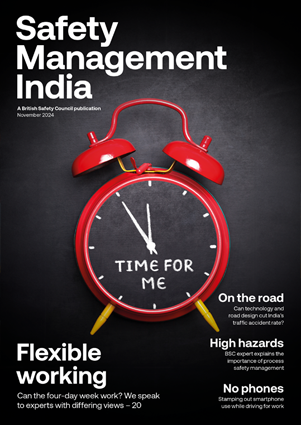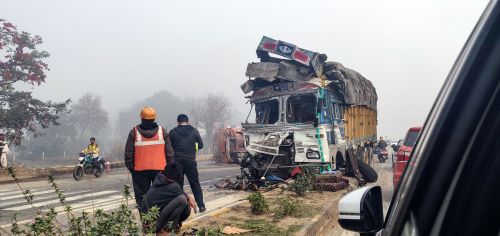Public and private sector organisations should be taking action to adapt to current and future impacts of extreme weather changes caused by climate change, and an IEMA toolkit provides practical advice on getting started.
Features
Turning the dial on climate change adaptation
The responsibilities of both health and safety and sustainability are intricately linked and intertwined. IEMA has published significant guidance and tools to help professionals working within these areas to understand the wide-reaching impact of extreme weather changes due to climate change. This includes a toolkit written by IEMA members Kit England, MIEMA CEnv, and Dr Ellie Murtagh, which serves as an introduction to extreme weather adaptation from a strategic perspective (i.e. why it must be a core activity for both public and private sector organisations) and from a practical one (i.e. how to get started).
 Photograph: iStock/ProjectB
Photograph: iStock/ProjectB
This short article summarises their work and sets out why it’s so important.
Climate change mitigation or extreme weather adaptation?
Climate impacts are predicted to continue for the rest of the century even if mitigation targets are achieved, due to the long lifespan of some greenhouse gases. The time lag between what we do and when we feel it means that mitigation is unlikely to address the current and near future impacts of climate change.
While many organisations are focused on cutting emissions, the reality now is that action on climate change requires both climate mitigation to reduce greenhouse gas emissions and limit future global warming, and an equally robust effort on extreme weather adaptation to minimise the damage of climate impacts.
As health and safety professionals, it is important to start preparing for these extreme weather changes as the impact can be far-reaching. From disruption to the workforce, service users or customers and supply chains, to the destruction of products, buildings and transportation, to the financial health and strategic direction of an organisation.
Understanding extreme weather risks
Given the accelerating rate of climate change, there is a compelling case for all businesses and organisations to begin rapidly adapting to it, and for some, it is becoming a legal or regulatory requirement. As with other types of risk mitigation, extreme weather adaptation reduces or minimises losses. The sooner the impacts of climate change are integrated into our processes, the more time and resources we have available for mitigation and adaptation. The Global Commission on Adaptation highlights that adaptation actions bring multiple benefits, including:
- Saving costs and improving profitability by adapting now. Organisations and governments can avoid or reduce current and future economic costs or losses associated with climate change.
- Ensuring business continuity by being better prepared for climate impacts and disruption. Adaptation increases efficiency and reduces operational costs, improves business operations and enhances competitiveness. Insurance premiums are increasingly affected by future climate risk, and in some limited cases can lead to insurance being withdrawn or conditions imposed to incentivise action.
- Managing reputation as investors and customers are increasingly demanding sustainable, resilient options. This can help build a corporate or organisational mission committed to climate resilience.
- Capitalising on business opportunities that come with thinking creatively and sustainably. Organisations might offer new products and services that understand, plan for and respond to the changing climate. It can also provide positive economic benefits by reducing risk, increasing productivity and driving innovation; and, done well, also provides wider social and environmental benefits. Adaptation is essential to protect the natural environment as well as people’s health and wellbeing.
How do I develop and implement adaptation strategies?
Adaptation planning takes time, and the risks are dynamic and changing. Adaptation actions are typically classified into two types of activity.
 Chloë Fiddy is policy and engagement lead - climate and energy at IEMA (Institute of Environmental Management and Assessment).
Chloë Fiddy is policy and engagement lead - climate and energy at IEMA (Institute of Environmental Management and Assessment).
Adaptive capacity is an organisation’s ability to adapt to the impacts of climate change and is influenced by local conditions such as access to financial, technological, social and political information and resources. The purpose of building adaptive capacity is to enhance or strengthen an organisation’s ability to respond to climate change. Identifying barriers to adaptive capacity, such as limited resources, and providing support and assistance to address these needs is crucial.
Taking action on the ground describes how adaptation efforts are delivered and integrated within the organisation. It will be the processes and procedures to reduce risk or take advantage of any benefits related to gradual and extreme changes. Adaptation actions might include physical infrastructure such as flood defences, sea walls, or installing sustainable urban drainage or early warning systems. On the ground, action can be achieved through several approaches, including protecting, accommodating, retreating, or a phased implementation of all three.
Where should we start?
The reality is that there is not a ‘right’ place to start. Adaptive capacity can differ significantly between communities, populations and regions. Some organisations start by undertaking a strategic risk or vulnerability assessment, while others begin by focusing on a scenario, such as a flood or supply chain disruption. How an organisation prepares for and responds to extreme weather risks is as unique as the organisation itself. However, you should consider these steps carefully:
- Understand the extreme weather risks predicted for the regions where your organisation and main stakeholders are located, such as workforce, customers or service users and suppliers. Regional analysis and guidance are readily available, such as the independent assessments for UK climate risks, published by the Committee for Climate Change.
- Integrate adaptation assessments and strategies into your existing risk register. Anticipating and managing these risks is not a one-off process, but iterative, requiring an ongoing process of assessment, learning and response.
- Decision-makers will have to anticipate (and account for) uncertainty and ensure their decision-making processes are robust, transparent and equitable. Wherever possible, adaptation actions should deploy approaches that work with nature to promote the adaptive capacity and resilience of natural systems, promote biodiversity and contribute to carbon sequestration.
The Climate Change Adaptation Guide for practitioners, which gives IEMA members a framework to develop and lead robust and comprehensive adaptation approaches, whatever their context can be found at iema.net.
Chloë Fiddy is policy and engagement lead – climate and energy at IEMA (Institute of Environmental Management and Assessment).
Take part in IEMA’s Green Skills for Health & Safety quiz to help assess your environmental expertise:
More information on IEMA:


FEATURES
Why changes to recycling legislation in England are an opportunity, not a burden
By on 12 November 2024

Road safety in India: could better road safety, vehicle technology and enforcement make driving for work safer?
By Orchie Bandyopadhyay on 10 November 2024
India has a poor road safety record, and research shows that commercial vehicles are a major contributor to the problem, with trucks estimated to be the single largest vehicle type involved in impacts leading to fatalities. We look at solutions that could make driving for work and the roads in general safer – from in-vehicle technology that warns truck drivers about unsafe behaviour to improving the design features of major highways.

